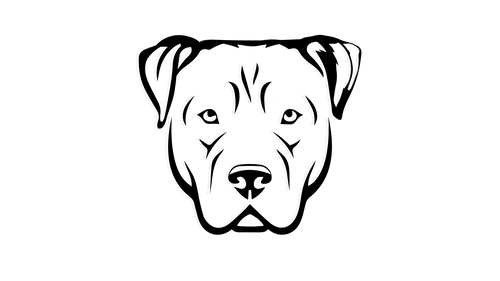It's finally feeling more like Springtime, and that means that we will be outside a lot more to enjoy the great weather. With that newfound urge for adventure can come some unexpected mishaps! Fortunately, not every ailment requires a rush to the nearest animal hospital. some minor injuries can be cared for at home, and caring for injuries as soon as they happen can also help with transport if you do have to see a vet!
Firstly, you need a first aid kit on hand. If you don't have one, you can purchase one or make your own by following the AVMA list of pet first aid supplies. In order to treat a wound, you will need to have the following:
- Sterile bandages
- Cleansing solution suitable for pets
- Antibacterial ointment
- Bandage scissors
- Elastic wrapping
- Tweezers
- Spray bottle
- Clean towels or rags
Before you begin, make sure you have someone to help you restrain your pet while you treat the wound. If no one is available, you can also use a muzzle. Even if your pet has never been aggressive, pain can cause a pet to react differently. Avoid scratches or bites by having a plan to keep your pet stable and calm while you treat the wound. If you begin and you find your dog is becoming unstable, stop what you're doing until you have the above precautions in order. Never use physical force to hold down a dog who is injured - if they are freaking out over you treating them, it's best to leave it to the professionals.
- Stop the bleeding. If the wound is bleeding, put a clean towel or cloth over the wound and apply light pressure. If the wound is bleeding profusely, it’s best to go to the veterinary emergency hospital since this is a more serious wound than a simple cut.
- Clean the wound. Puncture wounds, such as a bite wound, can appear minor, but they are not. Bite wounds contain bacteria that can cause infection. Even if it is small, clean and bandage the wound. To do this, use a water bottle with clean water in it and spray on the wound to clean out any debris, dirt, etc. If you have access to a bathtub, bathe the area with lukewarm water.
- Remove any foreign objects with tweezers. If there are things like glass, twigs, thorns, etc. in the wound after you have cleaned it, remove them with tweezers. Use a magnifying glass to remove all of the debris.
- Disinfect the wound. Using a cleanser such as diluted betadine or chlorhexidine, which are often included in a packaged first aid kit, gently clean the injured area. Do not use rubbing alcohol or hydrogen peroxide as these can damage the tissue and delay healing - and can also be very painful, causing your dog a great deal of discomfort.
-
Cover up the wound with a bandage. Apply a small amount of antibacterial ointment and cover the wound with a piece of sterile gauze or other bandage. Use the elastic tape to hold the bandage in place. It is important to cover any area that has ointment on it, as antibacterial ointments (such as Polysporin) are toxic if ingested. If you are unable to securely cover the area, use a Colloidal Silver spray to help with disinfecting. While holding the pad in place, gently begin wrapping a gauze bandage over it. Wrapping the bandage with 100% overlap will be difficult to secure, will likely become too tight or too loose, and suffocate the wound. This should be avoided and instead shift the position of the bandage with each wrap. With each wrap, one-third of the underlying section of bandage should be visible from the overlap. Continue the wrap over onto the dog’s fur on either side of the pad.
We don’t want the bandage to be too loose because it will have an easy time slipping off and won’t apply necessary pressure. We also don’t want it too tight, as the circulation to the wound is impaired and will bring discomfort onto your pup.
You can test the pressure by placing your fingers under the bandages. Two fingers should fit comfortably underneath. If you can’t fit your two fingers comfortably underneath, or the bandage allows more than two, adjust the tightness of the bandages by rewrapping. Once you approve of the tightness, wrap a tighter (with moderation) layer of adhesive material with your fingers still under the bandages.
- Stop the licking. Pets can’t understand not to bite or lick at a bandage. Since their mouths can spread bacteria into the wound (and have you repeatedly disinfecting and reapplying a bandage), consider using a coned collar (or blow-up collar - these can also be made at home using a pool noodle) around the neck to prevent them getting at the wound. If the injury is to the feet, consider a disposable booty to cover the wrapping.
When finished, reward your pet for being a brave boy or girl. Take care to remove the old bandage after 24 hours and replace with a new one. Monitor how your pet’s wound is healing. If you notice there is additional bleeding, changes to the color of the wound, swelling, or discharge then contact your vet immediately. This may indicate an infection or that the cut or puncture isn’t healing properly. Keep an eye on your dog and the bandage, and notice when it slips or appears uncomfortable for your dog. Adjust the bandages as needed. The bandage may become dirty, in which case an immediate replacement is necessary.

